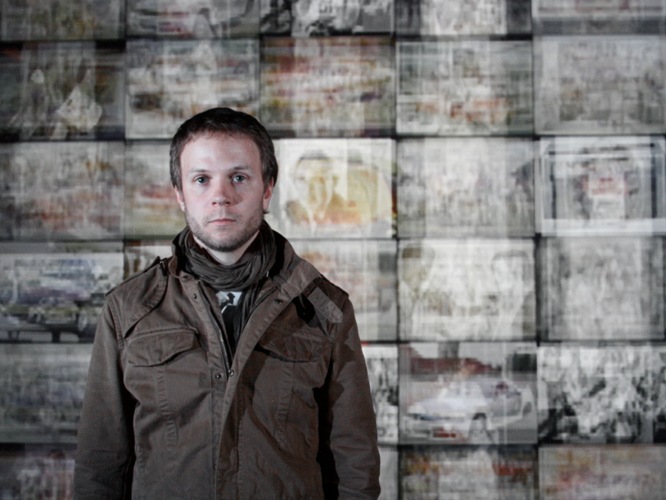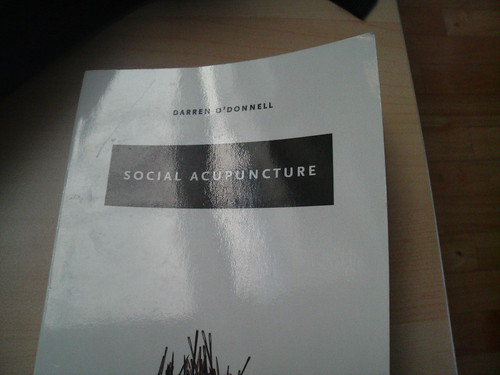Saying that I’m new to Kingston almost sounds like an understatement. Having just moved here in the second week of January, it was only a mere 10 days before I was introduced to one of the City of Kingston’s wonderful museums, The Pump House Steam Museum. As the newest intern to join the Cultural Services department I’m new to the history and culture that surrounds the Kingston community. With a background in arts and culture I was unsure as to what to expect at a museum that explores science and technology. This close-mindedness was quickly alleviated when I realized there is much more to the museum than science, and that in fact, it was right up my artistic alley.
 Curator Gordon Robinson met me at the museum and began the one-hour long general tour of the building. He began by pointing out that from where I was standing in the front entrance of the building I could see the limestone outline of where the original 1849 pump house stood. He then drew my attention to the vast red-brick addition that was completed in 1890 to house the new steam powered technology. The contrast between the original grey limestone and the addition showed an increased technological innovation of steam pumps as well as the growing demand in the community for water services. While being large enough to hold the new pumps, the new building was also sprinkled with beautiful architectural details my artistic eye could not overlook. Between the Romanesque arches and fleur de lis lined ceiling trim; this building of efficiency was also one of attractive features and craftsmanship.
Curator Gordon Robinson met me at the museum and began the one-hour long general tour of the building. He began by pointing out that from where I was standing in the front entrance of the building I could see the limestone outline of where the original 1849 pump house stood. He then drew my attention to the vast red-brick addition that was completed in 1890 to house the new steam powered technology. The contrast between the original grey limestone and the addition showed an increased technological innovation of steam pumps as well as the growing demand in the community for water services. While being large enough to hold the new pumps, the new building was also sprinkled with beautiful architectural details my artistic eye could not overlook. Between the Romanesque arches and fleur de lis lined ceiling trim; this building of efficiency was also one of attractive features and craftsmanship.Throughout the tour I learned that in those early days of water pumping in Kingston, water was sent directly from Lake Ontario to fire hydrants, public drinking fountains and a small number of homes. This sometimes murky liquid was untreated and unfiltered up until 1944 and often carried cholera and dysentery affecting those whose immune systems were vulnerable. Considering how particular people are these days about having filtered water, I couldn’t imagine drinking the lake water untreated. Reflecting on these methods of water distribution had me thinking gratefully about the ease by which I access water, and how lucky I am to rely on a clean water source.
While it became clear that my memory for elementary school matter and energy lessons was not very sharp, I was glad to have the simplified (and hands-on) descriptions of how the pumps worked readily available throughout the museum. Suddenly concepts that seemed complicated and removed from my life were easily understood. The impressive Osborne Killey and Inglis & Sons pumps housed in The Pump Room amazed me in their sheer size and capabilities. The high ceilings and large windows illuminated their presence, almost framing their beauty and importance to the community. Although learning about how the pumps functioned was interesting, I couldn’t help but find my mind continually drawn back to the history of the space, the importance of water to the community and the innovation in public water services in Kingston since 1849.
As I walked through the building one last time before braving the blustery Kingston winter, I couldn’t help but marvel in the beautiful detail and the history that lives amidst the Pump House Steam Museum. Not only does the space explore the science behind steam pumps, it also asks visitors to reflect on technological innovations, community heritage, architectural detail, and the current state of visitors’ way of life. Such beauty within a space previously dedicated to industry and efficiency is uncommon, and as a first time visitor to the Pump House Steam Museum I consider Kingston lucky to house this rare gem within its community.











